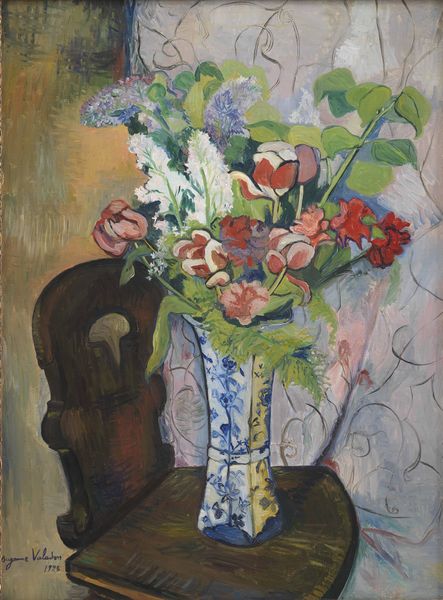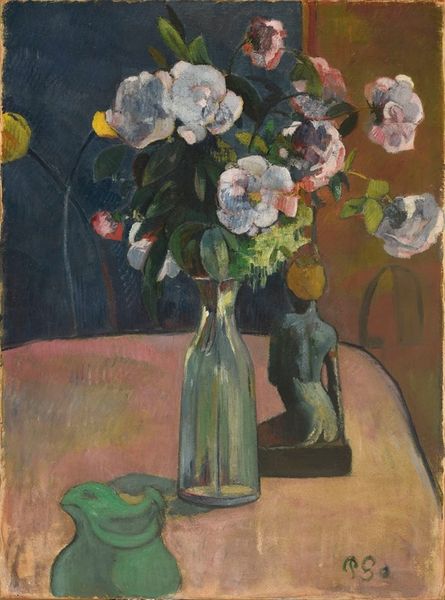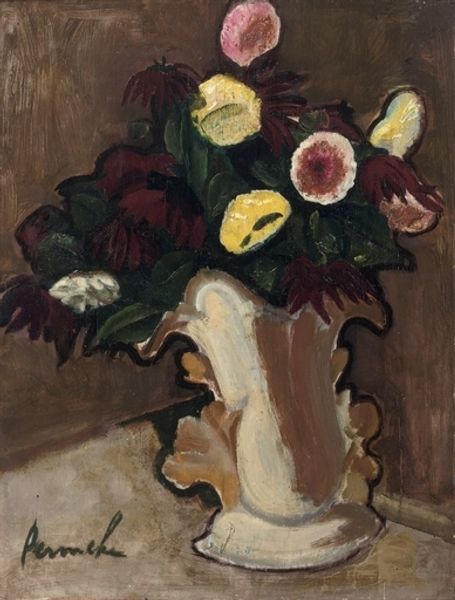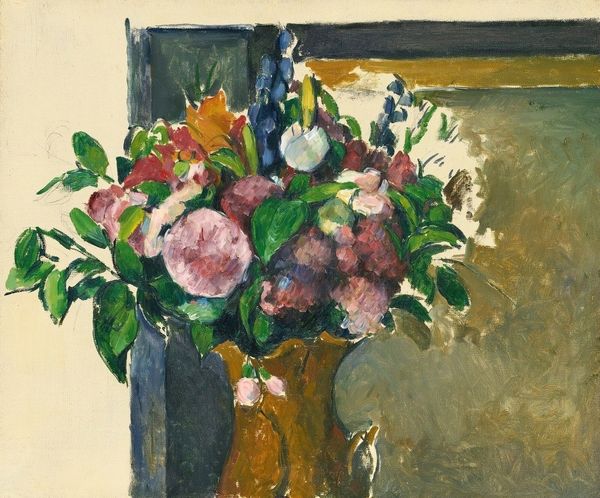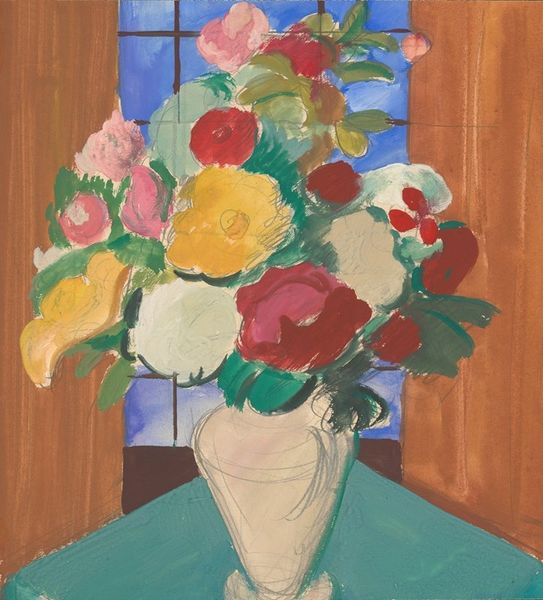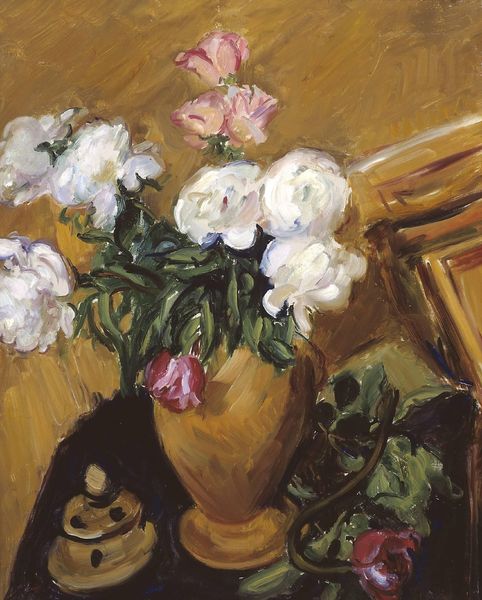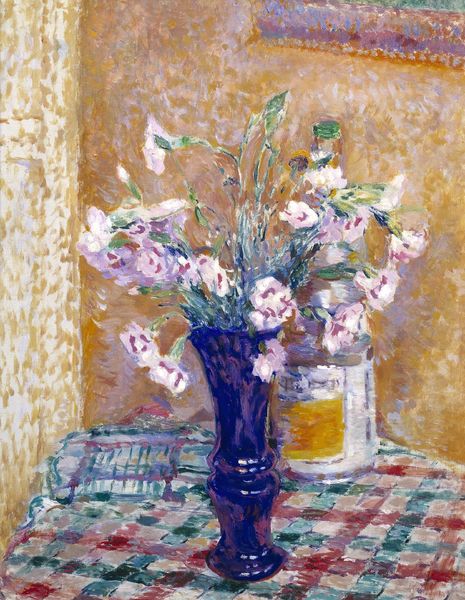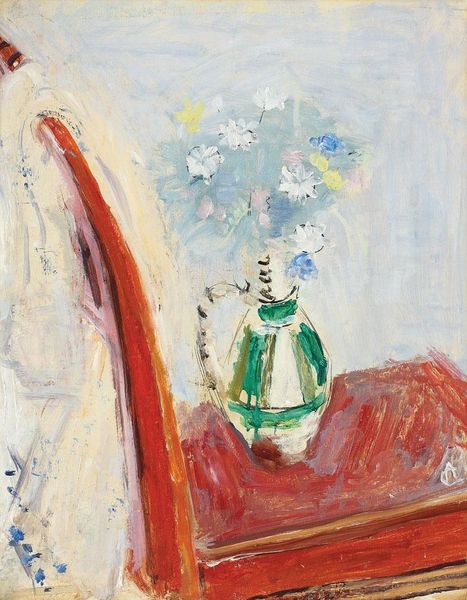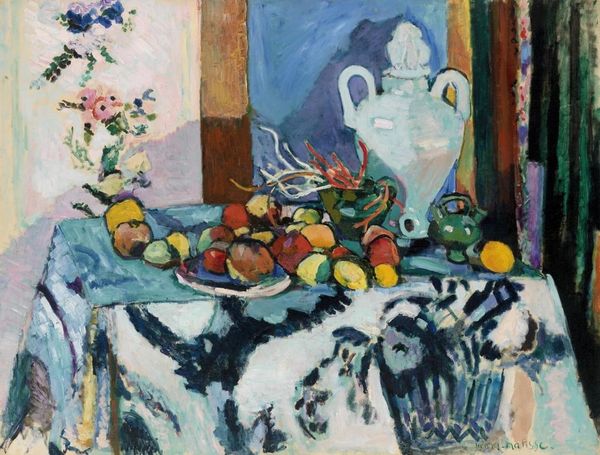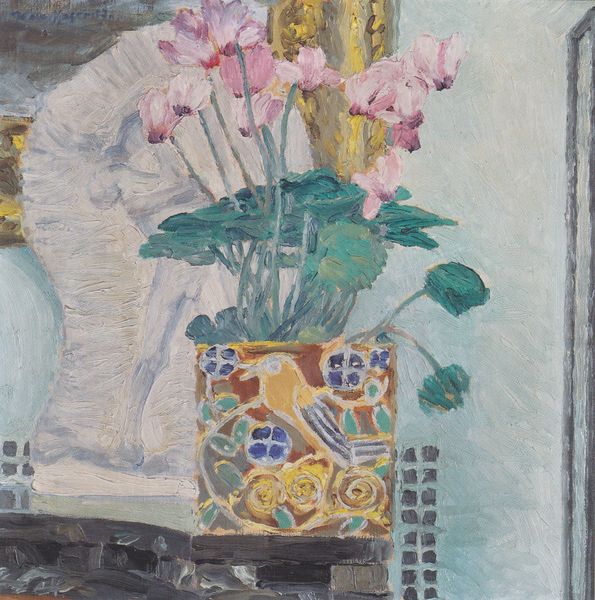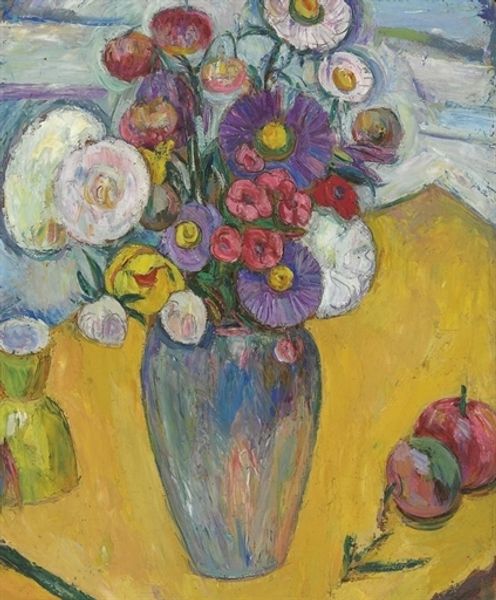
Copyright: Modern Artists: Artvee
Curator: We're looking at Henri Matisse's "Anémones au miroir noir", or "Anemones with Black Mirror" painted in 1919, rendered in luscious oil paint. Editor: It’s rather somber, isn't it? A stark contrast between the vivacity of the flowers and that looming black mirror… It makes you wonder what it reflects or maybe, doesn’t. Curator: The painting arrives amidst a period of transition for Matisse after the first World War, shifting away from purely decorative elements. It also seems interesting that he chose anemones, considering they are seen to symbolise fragility. This may signal the psychological toll that the war may have inflicted upon artists and wider society. Editor: You're right, there's this restrained energy. Almost like Matisse is saying, “Even beauty has its darker side”. Look at the composition – the off-centered vase, the stack of papers on the table, the mirror slightly tilting. I get this feeling he's presenting a perfectly curated yet imperfect picture of domestic life. There are no people here but yet everything seems to be inhabited. Curator: In terms of the domestic, art historians see this as his most profound exploration of that theme to date. In relation to feminist theory, it could even represent the invisible and emotional labour carried out by many women in the private sphere, the very labour that allows many famous artists to pursue their practices, Editor: A mirror that shows nothing… Or perhaps, it is showing what we often don’t wish to see in ourselves – our fears, our doubts, and our own ephemeral existence. This artwork reminds me that confronting those uncomfortable truths is what makes the beauty of living truly shine. Curator: Absolutely, and situating it within the post-war era, it speaks volumes about resilience, recovery, and the human capacity to still seek out beauty amidst pervasive trauma. Editor: Yeah… it's as though these resilient anemones are shouting, “We are still here. Even if things don't look the same, beauty endures in the everyday.” A timely message, isn't it?
Comments
No comments
Be the first to comment and join the conversation on the ultimate creative platform.
